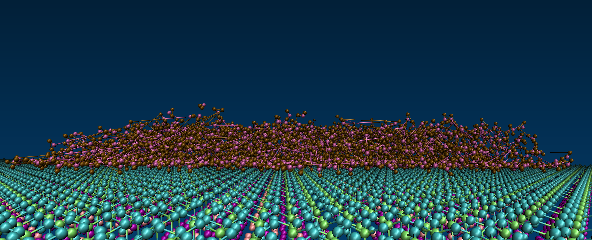Wenjin(Jack) Yu

Current Sophomore at University of Michigan Ann Arbor. Pursuing a dual degree in Business Administration and Data Science.
I enjoy using programming to create unique solutions and come up with data-driven decisions. My recent intern experience is working as an Entrepreneur Fellows at Scoutible. Previous experience include coding in R, Python, Java, C++ and applying Large-Scale Atomic/ Molecular Dyamics to construct high-fidelity models.
View My LinkedIn Profile
University of Florida Civil Engineering Lab
Project description: I participated in the Student Science Traning Program hosted by the University of Florida and conducted research on contact angle analyses between kaolinite, a common clay mineral, and water on nanoscale to visualize the effect of global warming on the microscopic level. I used Large-Scale Atomic/Molecular Parallel Simulator (LAMMPS) to construct a kaolinite surface consisting of 340,900 atoms at the microscopic level. Using Visual Molecular Dynamics (VMD), I viewed hte interactions between kaolinite and water molecules in real-life settings and concluded the changes in contact angle when the temperature rose. My written paper “Contact Angles Analyses between Kaolinite and Water Under Different Temperatures to Study Nanoscale Effects of Global Warming” was awarded by the program.
1. Simulation of carbon nanotube’s interaction with water molecules
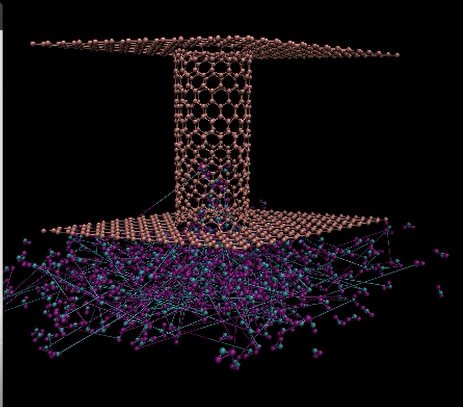
2. Zoom picture of kaolinite model
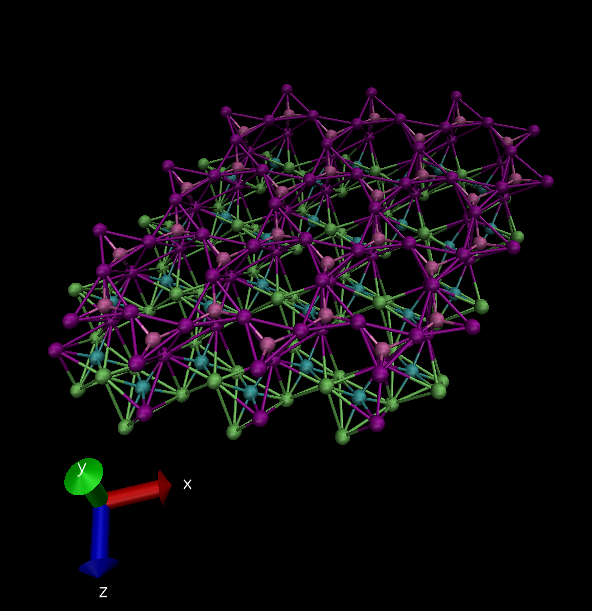
3. Full model of kaolinite surface with a box of water droplet
My final model was consisted of 340,900 atoms with a box of water droplets on top of the kaolinite surface.
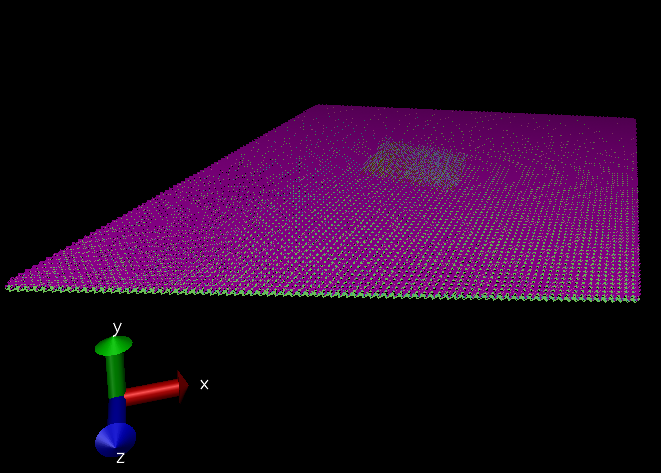
4. VMD visualization at 3000 time-steps
The final model was ran using LAMMPS under the experimental temperature of 305 Kelvin and VMD provided visualizations of realistic interactions between molecules. At the early stage of 3000 time-steps, the water box was intact.
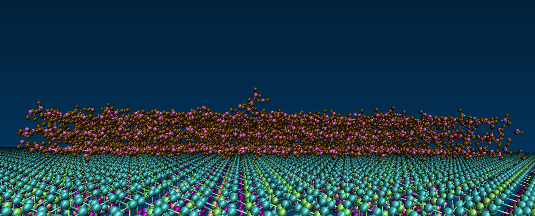
5. VMD visualization at 20000 time-steps
VMD shows clearly that the water box collapsed and the contact angle decreased as the kaolinite surface absorbed water molecules. This showed that global warming could have detrimental effects on the nanoscale.
